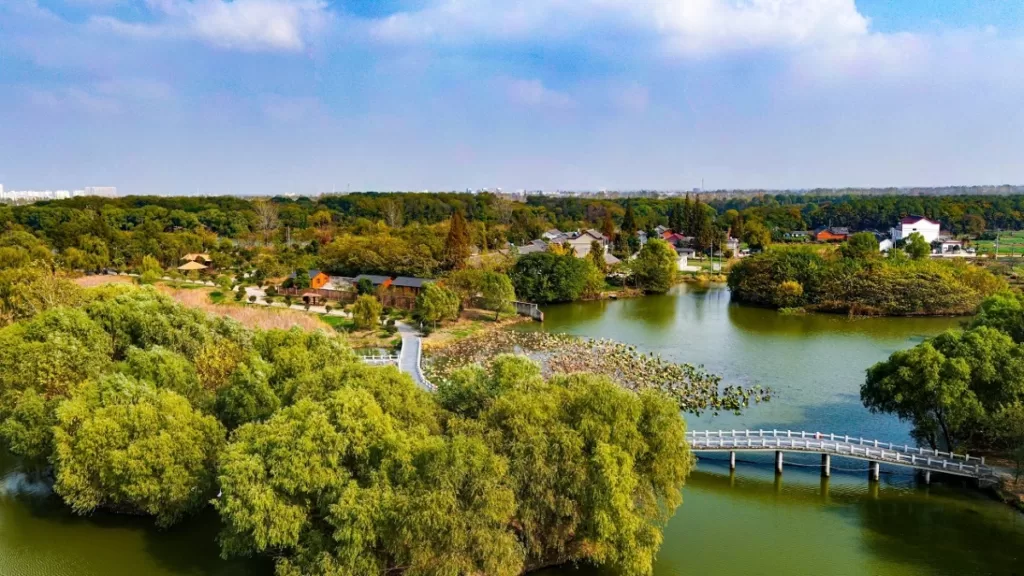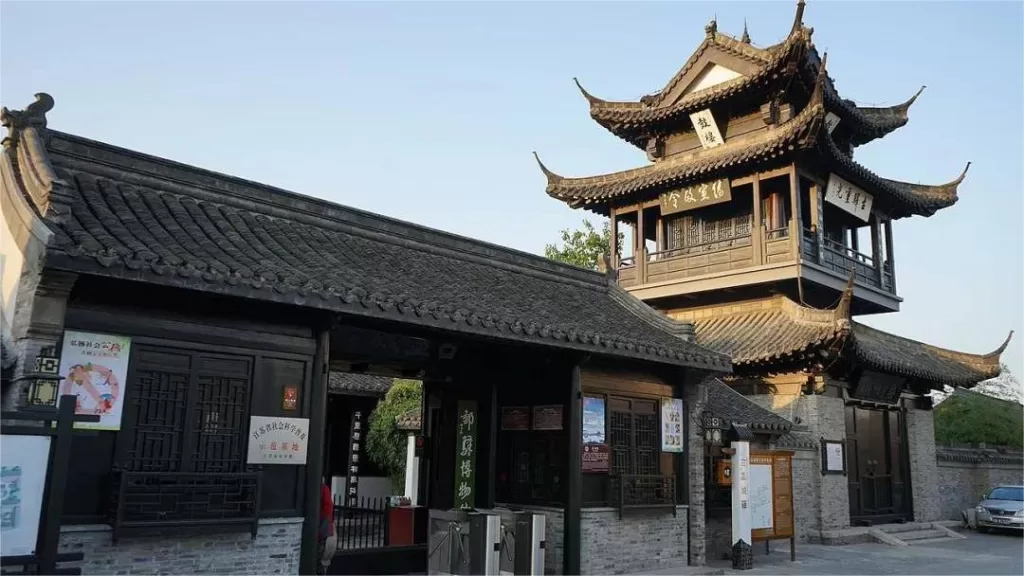Nestled along the banks of the Grand Canal near Yangzhou, Shaobo Ancient Town (邵伯古镇) is a picturesque and historically rich settlement that has earned its place as one of the five major towns in Jiangdu. Despite the relentless march of modernity, Shaobo Town retains a unique charm, with a division between its old and new streets. What remains constant are the ancient Grand Canal, the iconic cobblestone streets, quaint old lanes, centuries-old buildings, and the town’s symbol, a colossal iron bull stationed in the water. Shaobo’s history and significance in the region are richly intertwined with its ancient streets, historic landmarks, and unique cultural heritage.
Table of Contents
- Basic Information
- Location and Transportation
- Highlights of Shaobo Ancient Town
- Vlog about Shaobo Ancient Town
- Useful Tips Summarized from Reviews
- Attractions near Shaobo Ancient Town
Basic Information
| Estimated Length of Tour | Half a day |
| Ticket Price | Free |
| Opening Hours | 24 hours a day |
| Telephone Number | 0086-0514-85335168 |
Location and Transportation
Shaobo Ancient Town is situated in the northern part of Xiannu Town, Jiangdu District, Yangzhou City, Jiangsu Province, China. It is located approximately 12 kilometers north of the city center of Yangzhou. To get there, tourists can take bus 235, 358, 360, or Tourist Line 5 and get off at Shaobo Ancient Town North Entrance Stop (邵伯古镇北入口站).
Highlights of Shaobo Ancient Town
The Jade Belt River Bridge
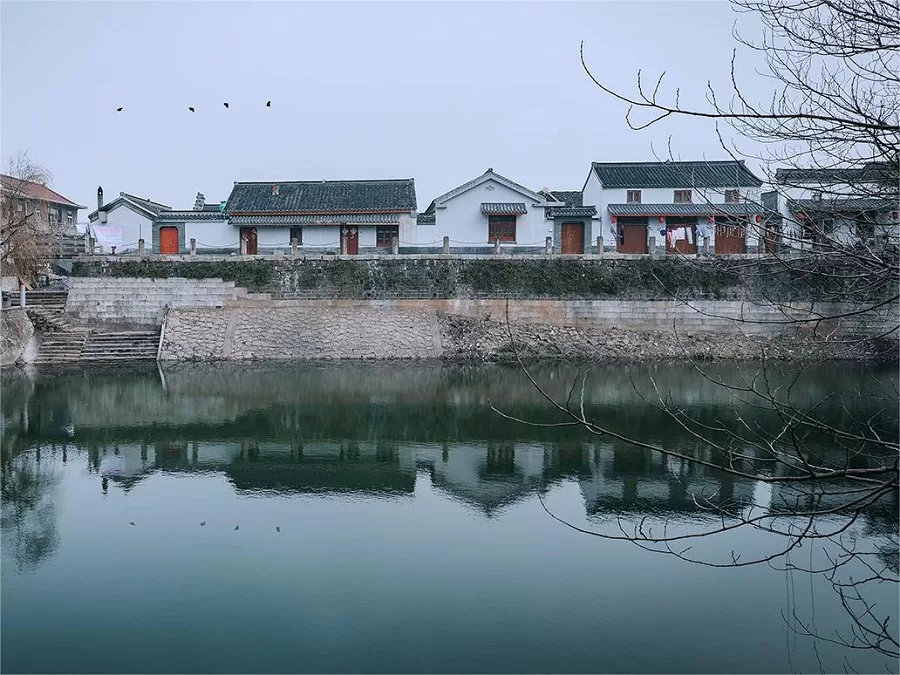
Winding through the town, you’ll notice a small, jade-like river running beside the backstreets, aptly named the “Jade Belt River” or “Yu Dai He.” This meandering river features a series of charming bridges, including wooden footbridges, cobblestone bridges, and arched stone bridges. The bridges provide convenient crossings over the river and contribute to the town’s picturesque charm. Legend has it that Emperor Qianlong, during his visits to the south, once lost a belt buckle in the river, and upon seeing the river’s belt-like shape, he named it “Yu Dai He” (Jade Belt River).
The Old Port: A Hub of Economic Activity

The Grand Canal has played an instrumental role in the growth and prosperity of Shaobo Ancient Town. The town’s old port, known as “Da Ma Tou” (The Great Port), is renowned as one of the most significant transportation hubs along the Grand Canal. It is often referred to as the “first ferry on the Grand Canal.” On the opposite bank of Da Ma Tou lies the ancient Pan’s Crossing, which faces the West River Street.
The Iron Bulls: Guardians of Shaobo
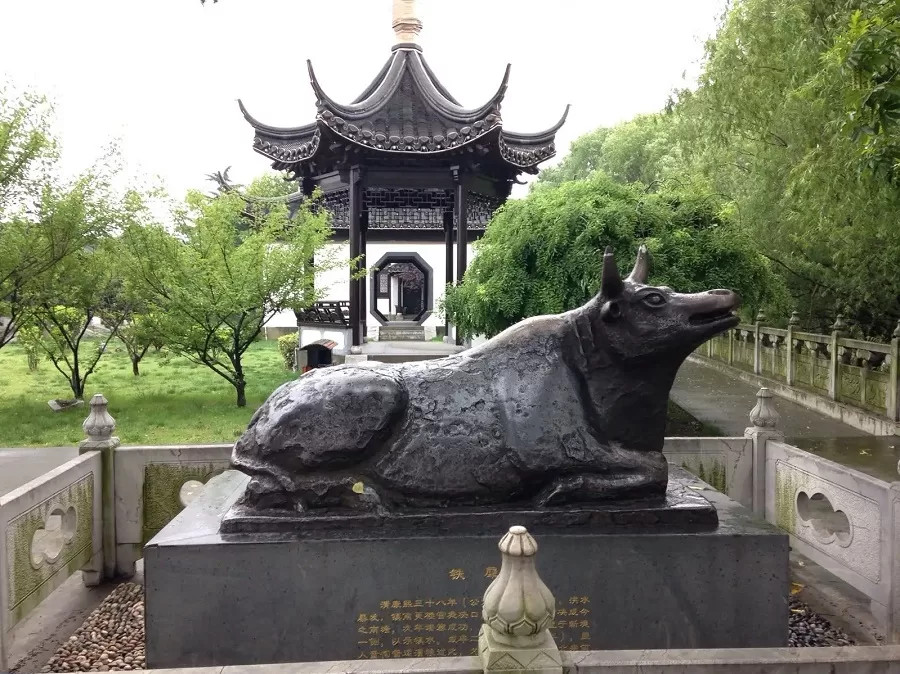
During the Kangxi period of the Qing Dynasty, a devastating flood caused a breach in the Nangenglou levee, resulting in a massive 180-meter-long and 13-meter-deep gap. In response to this emergency, Emperor Kangxi ordered Caohe Governor Zhang Penghe to quickly repair the breach. However, due to the breach’s depth, they decided to divert the river and created a new path called Yue River. To commemorate this event, the imperial court placed twelve animal sculptures along the water’s edge, which included “nine oxen, two tigers, and one chicken” in strategic locations to help control the water flow. Of these sculptures, only a few iron bulls remain scattered along the riverbanks, with the Shaobo Iron Bull being one of the best-preserved examples. This iron bull measures 1.98 meters in length, 1.10 meters in height, is hollow inside, and rests horizontally on a sturdy iron base approximately 10 centimeters thick. Its intricate craftsmanship and lifelike appearance make it a remarkable testament to the town’s history.
The Cobblestone Streets and Historic Residences
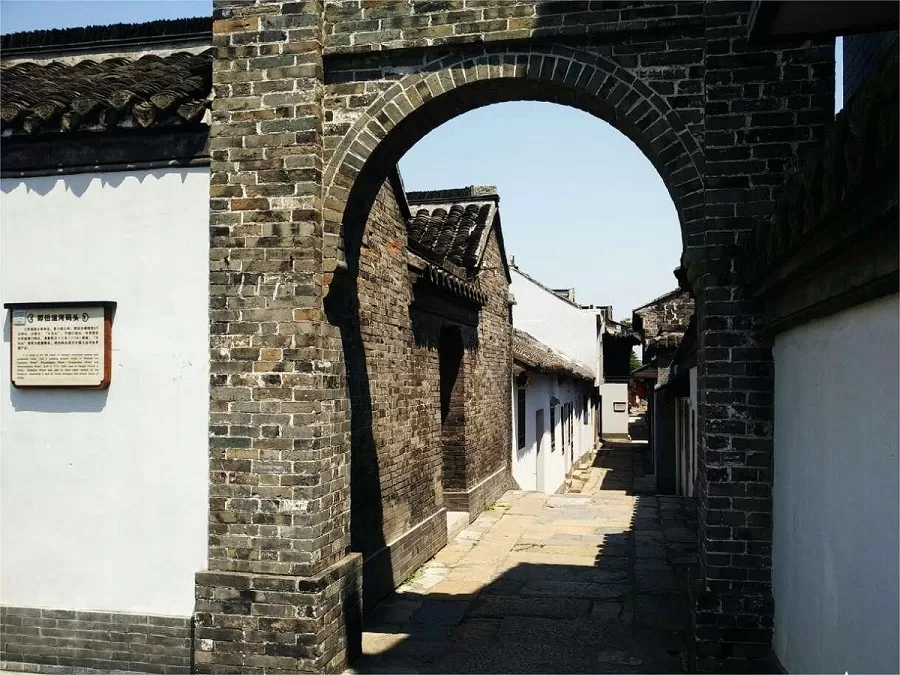
Shaobo Ancient Town boasts a unique treasure – a three-century-old cobblestone street stretching for three kilometers from north to south. Alongside this ancient street, you’ll find over 20 well-preserved Ming and Qing dynasty residences. These historic homes stand as a testament to the town’s rich history, and visitors can explore the architectural and cultural relics that have stood the test of time.
Laihe Temple: A Glimpse into Religious History

Laihe Temple, originally known as Fahua Temple, was established in the third year of the Sui Dynasty (607) by the monk Puhui. It was later rebuilt during the fifth year of the Ming Hongwu era (1372) and subsequently renovated in the sixth year of the Ming Zhengtong era (1441) by the monk Yuancheng. Notably, the temple was also financially supported by a prominent local, Peng Rushi, who contributed to its reconstruction. On the day of its completion, two cranes circled around the temple, leading to its renaming as “Laihe Temple” (the coming of cranes temple). In the past, Laihe Temple was a significant religious center in the Yangzhou region. Unfortunately, due to frequent wars, only a pair of stone lions, a gingko tree, and ancient stone carvings remain as relics of this once-thriving center of spirituality.
Vlog about Shaobo Ancient Town
Useful Tips Summarized from Reviews
Must-Try Specialty: The sausages in the town are renowned and distinct from those in other places. Make sure to sample the local sausages for a unique culinary experience.
Authentic Atmosphere: Shaobao Ancient Town is described as having a low level of commercialization. The town is rich in cultural charm and natural beauty, providing an authentic experience. Expect to encounter locals sitting at doorsteps, either enjoying a meal or engaging in casual conversations. This setting evokes a sense of warmth and nostalgia, reminiscent of one’s hometown.
Crayfish Seasonal Treat: If you visit between July and September, you’ll be in for a treat as it’s the season for crayfish. The town is dotted with crayfish restaurants during this period, and there is even a Shaobao Crayfish Festival.



